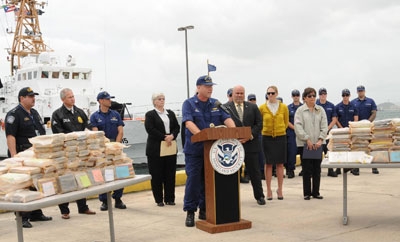Drug trafficking through the Caribbean doubled in the first half of 2013 compared to the previous year, according to the DEA, as traffickers return to the region to escape the increased law enforcement pressure on Central America routes.
According to the Drugs Enforcement Administration (DEA), the first half of this year saw 14 percent of cocaine destined for the United States trafficked through the Caribbean, compared to seven percent in the same period of 2012. The DEA’s Caribbean division head, Vito S. Guarino, said the trend is likely to continue over the coming years, reported the Miami Herald.
According to the DEA, Puerto Rico in particular is becoming increasingly important to traffickers because of the lack of customs inspections on the journey to the United States. This was underlined earlier this month, when the Federal Bureau of Investigation (FBI) dismantled a major drug trafficking organization based on the island, which it labeled the “most powerful organization” in Caribbean trafficking over the last 20 years.
InSight Crime Analysis
These latest figures from the DEA reiterate a message which has been coming from US officials since last year. In April this year, State Department official William Brownfield declared that a revival of Caribbean trafficking routes was on the cards as drug traffickers look to avoid the ramped up law enforcement efforts in Central America.
The United States has been channeling funds and assistance to anti-narcotics efforts in the region for several years and recent initiatives such as the $200 million provided through the 2010 Caribbean Basin Initiative (CBI) have boosted long term operations such as the drug interdiction efforts of the Operation Bahamas, Turks and Caicos (OPBAT).
Some of these operations have registered notable successes. Improved facilities for tracking air traffic, such as the new radar system introduced in Puerto Rico in January, have been particularly effective in reducing drug flights into the region. However, sea routes remain a serious problem. The combination of inadequate state resources and expansive coast lines make the go-fast boats and submarines traffickers use to transport their product between Caribbean islands extremely difficult to monitor.

